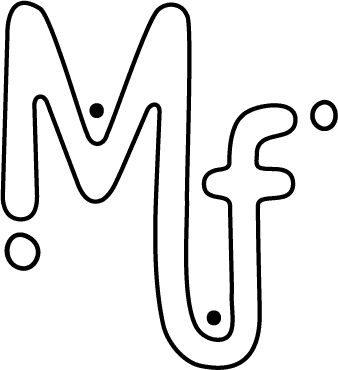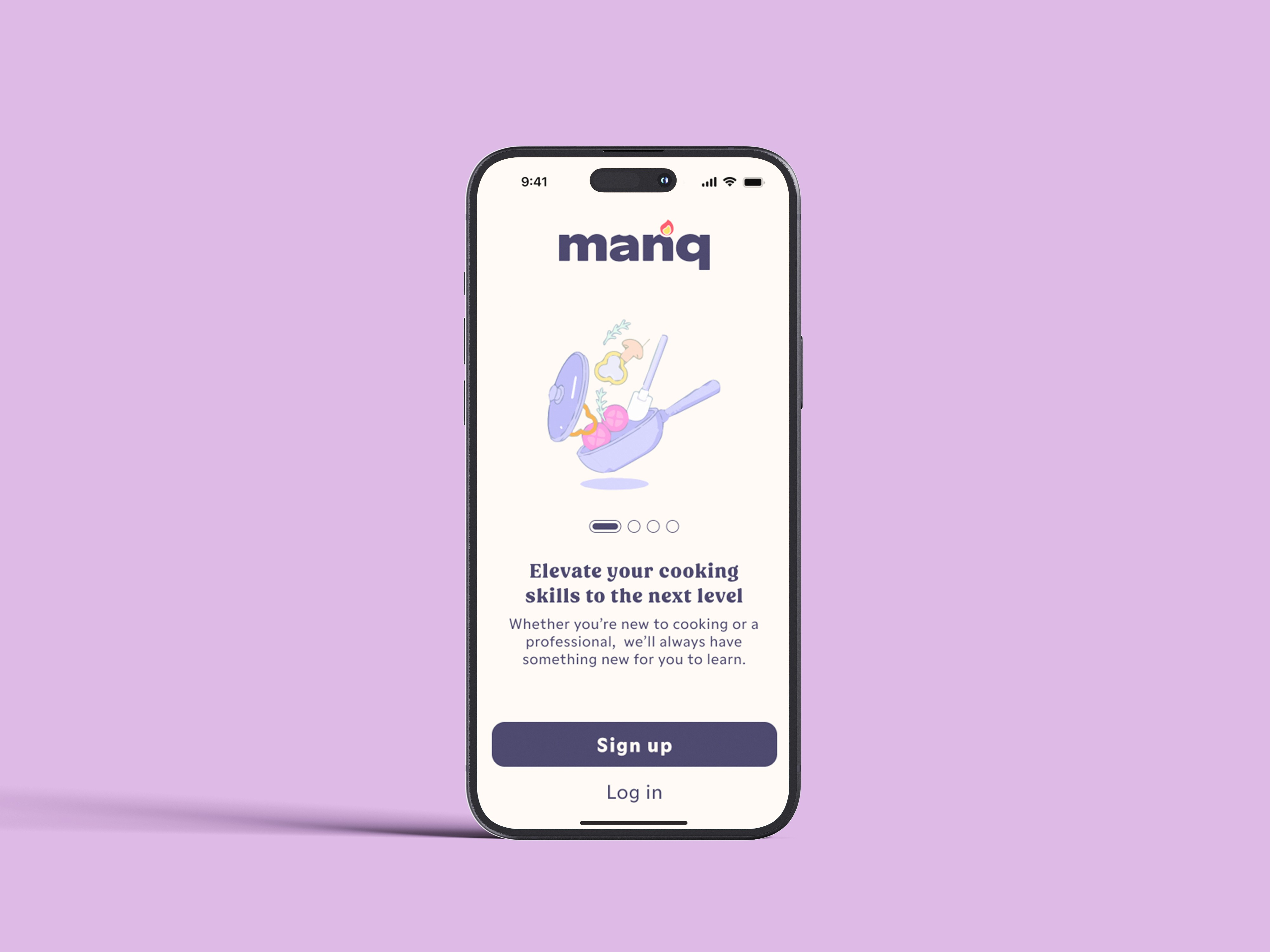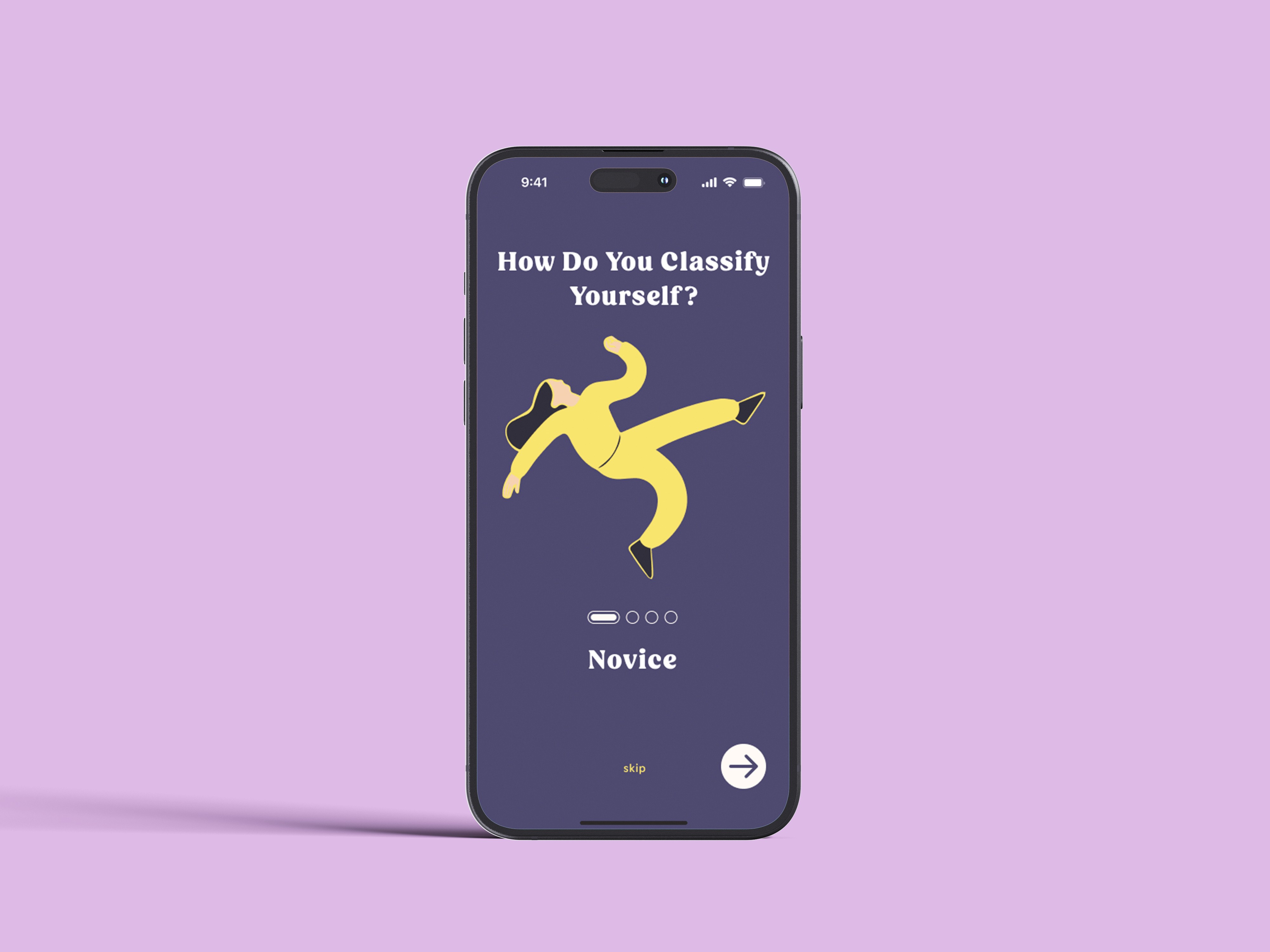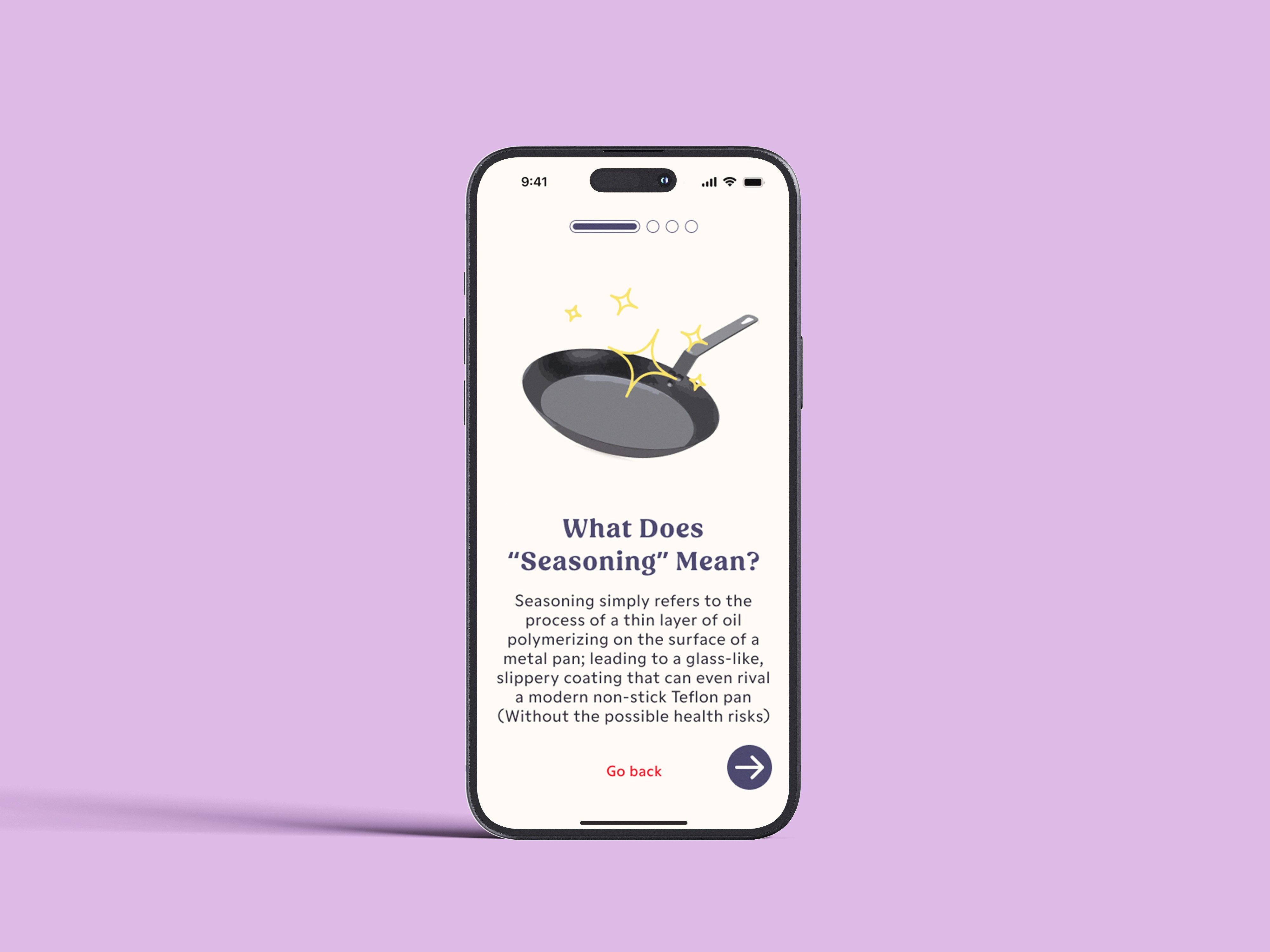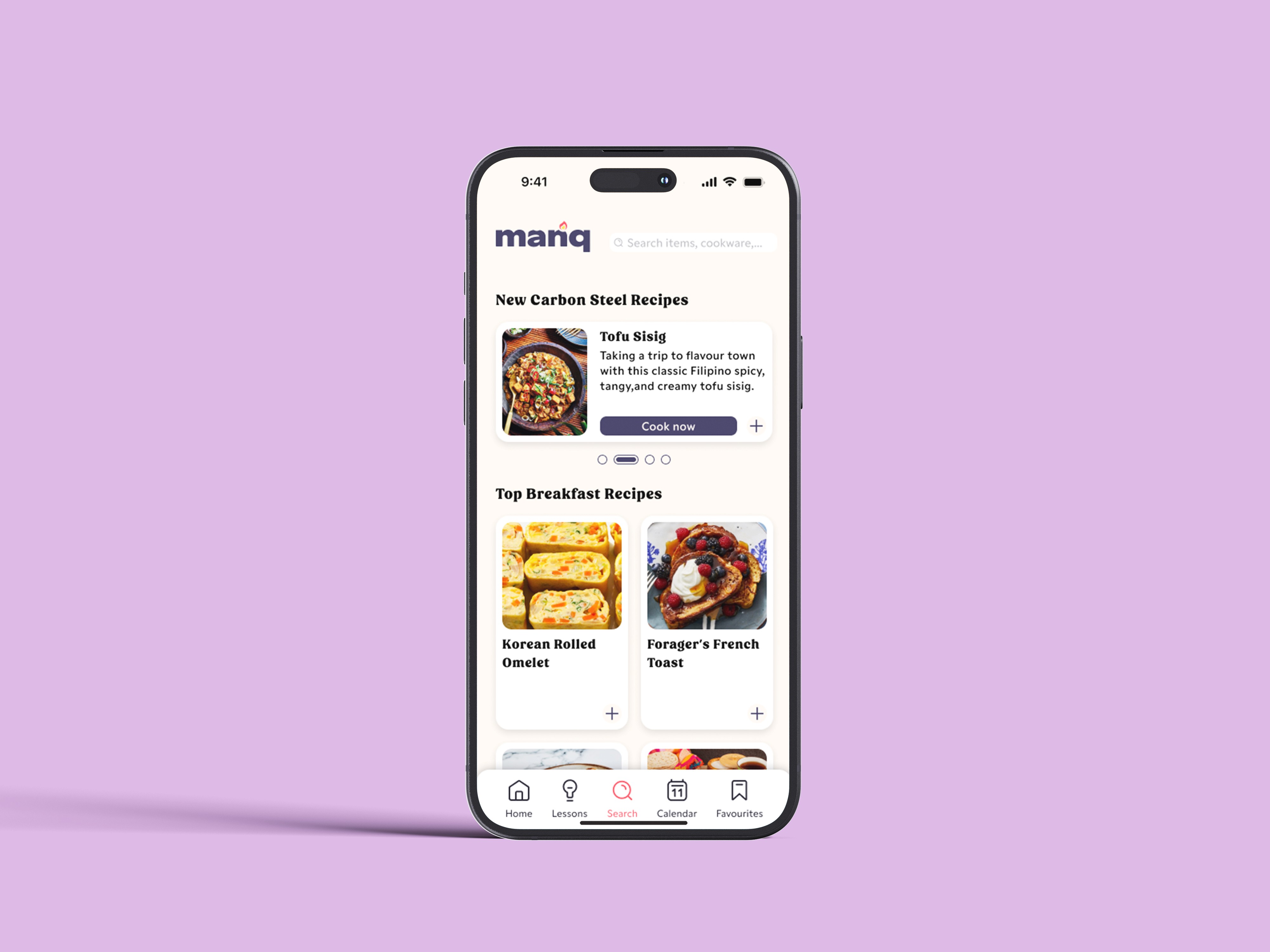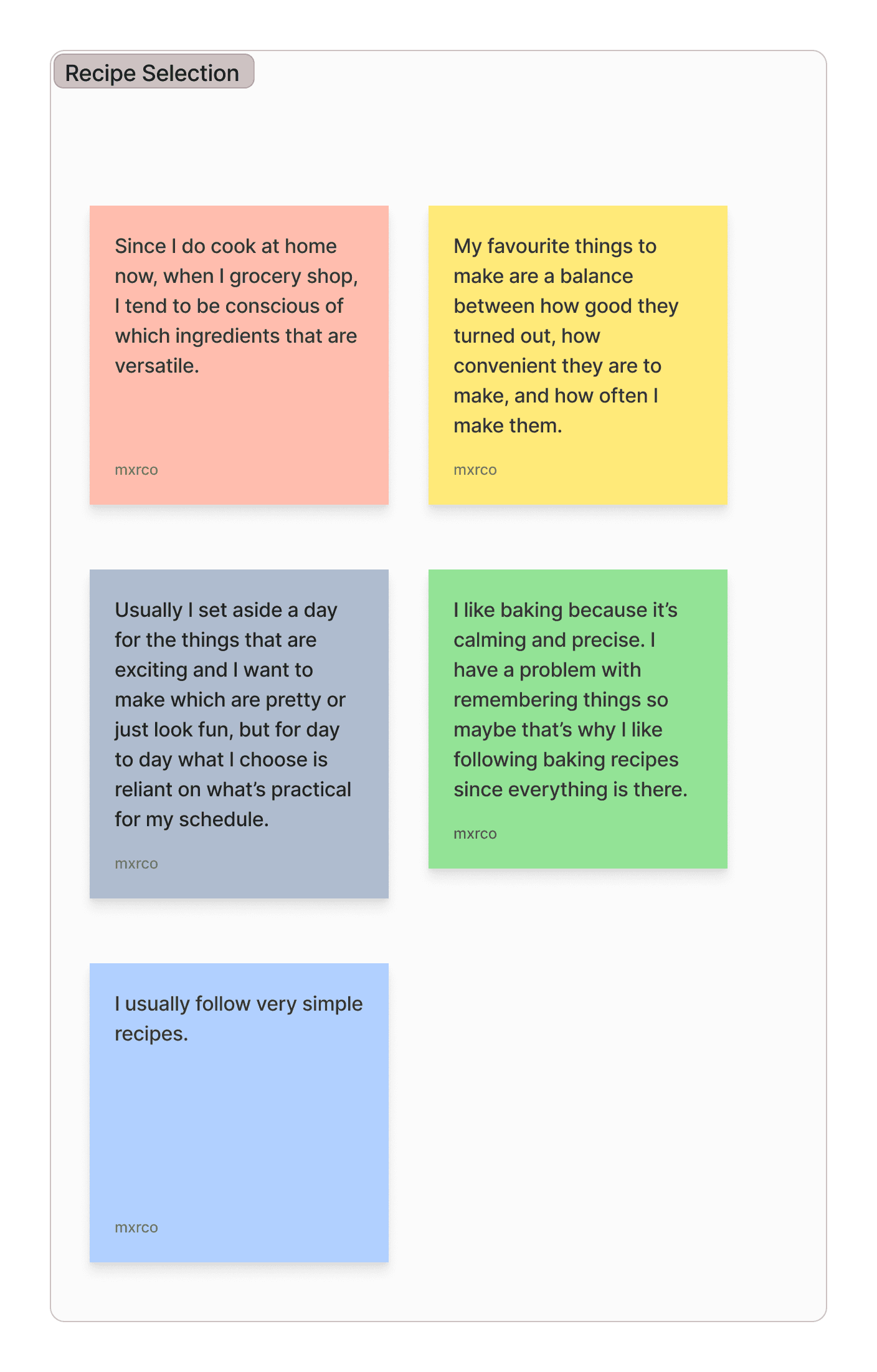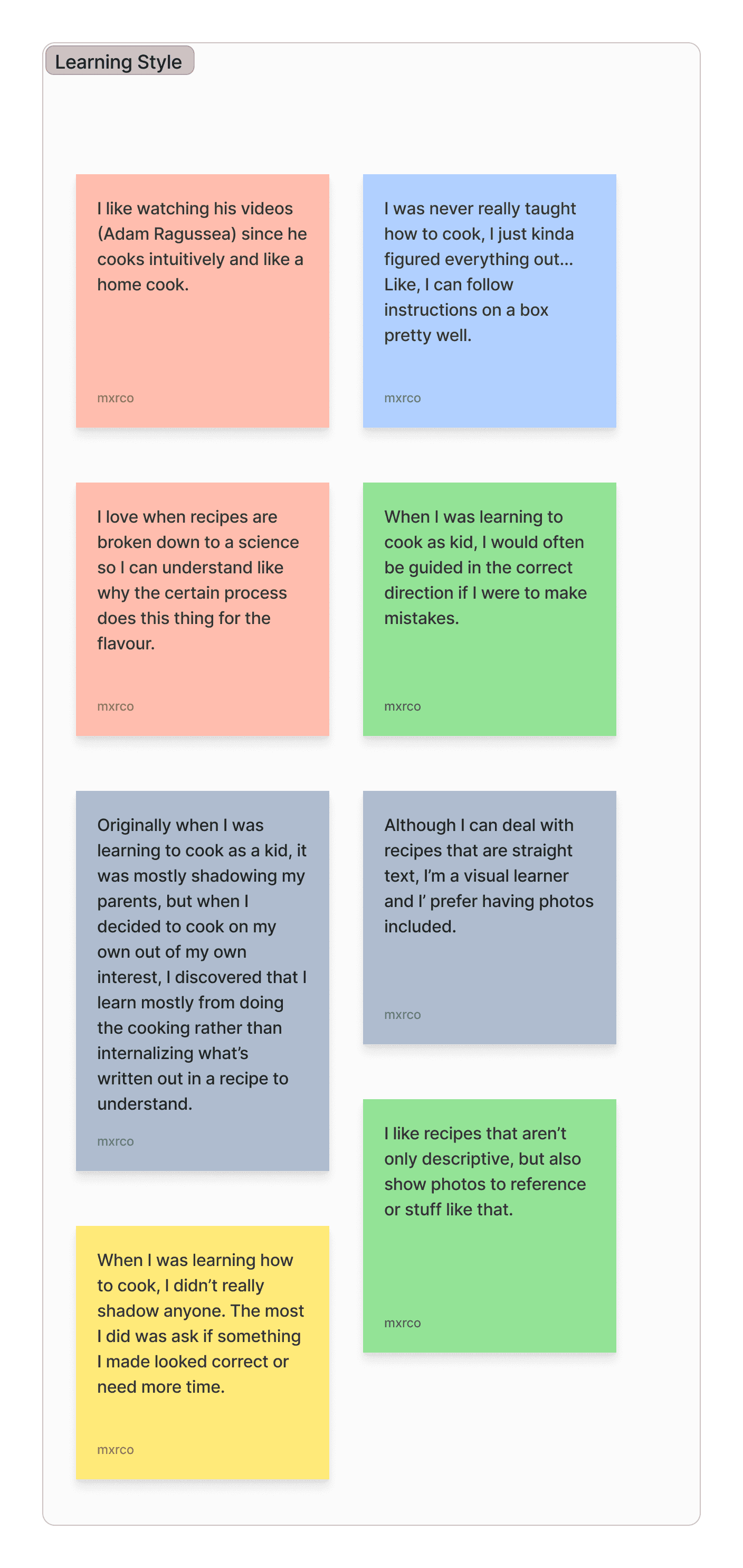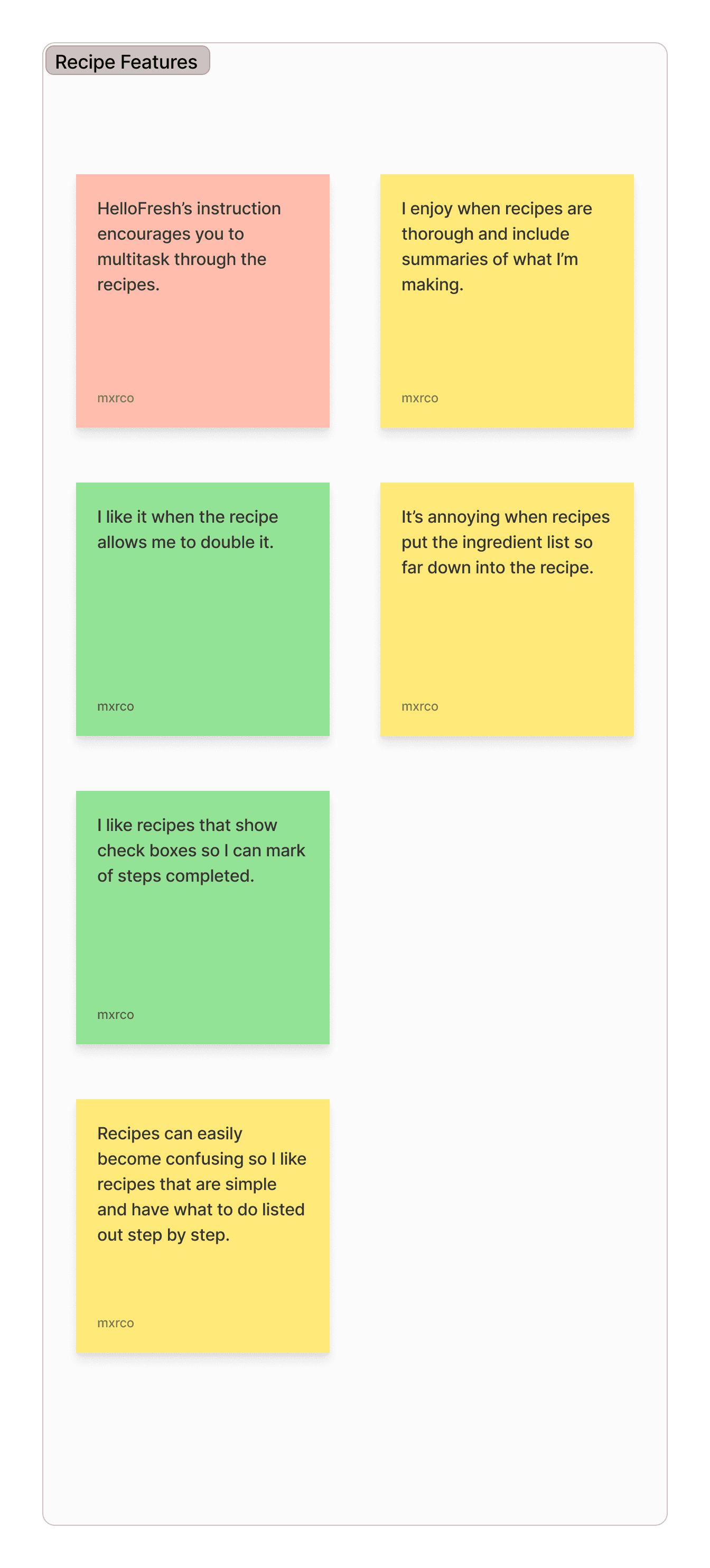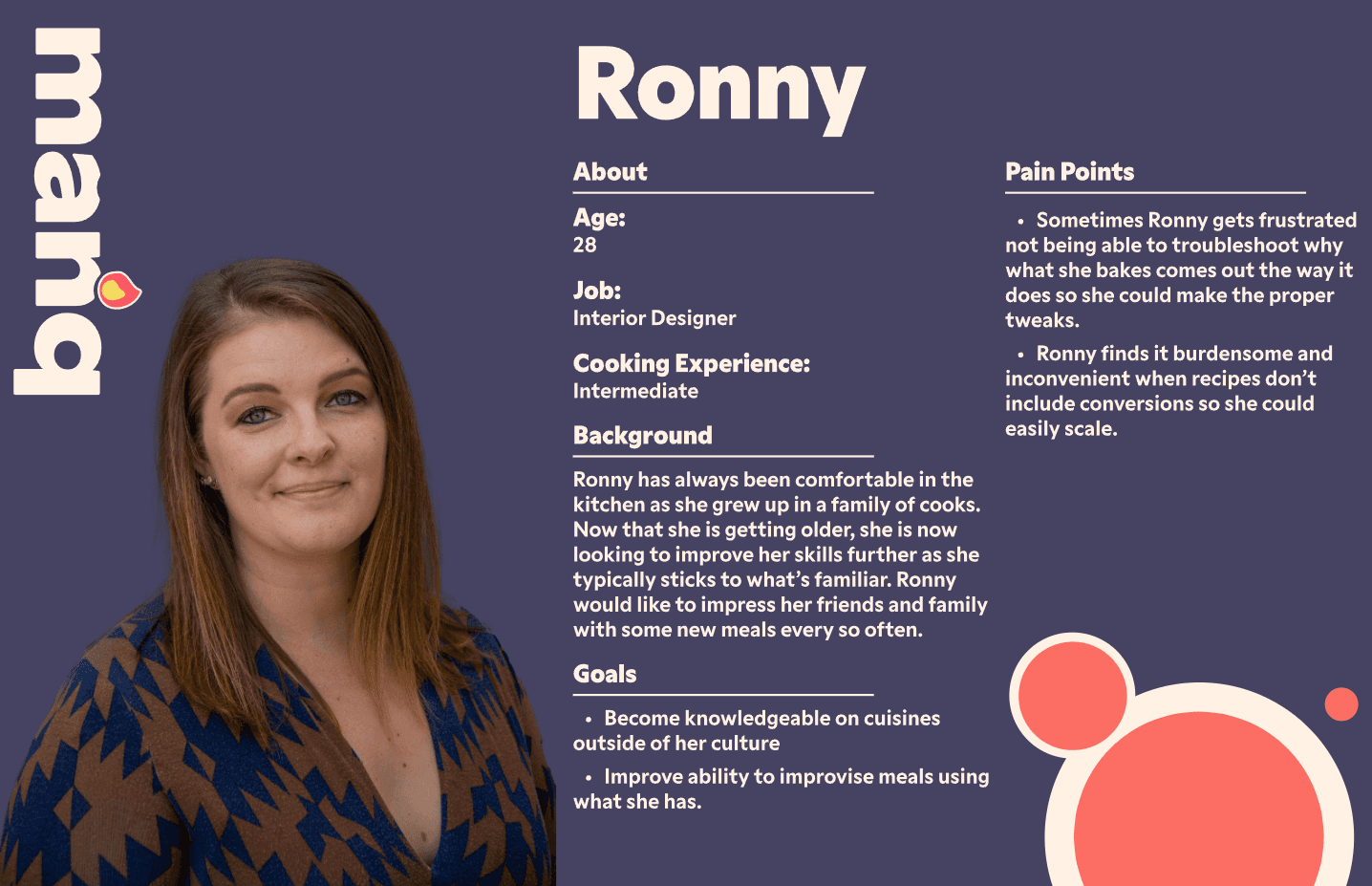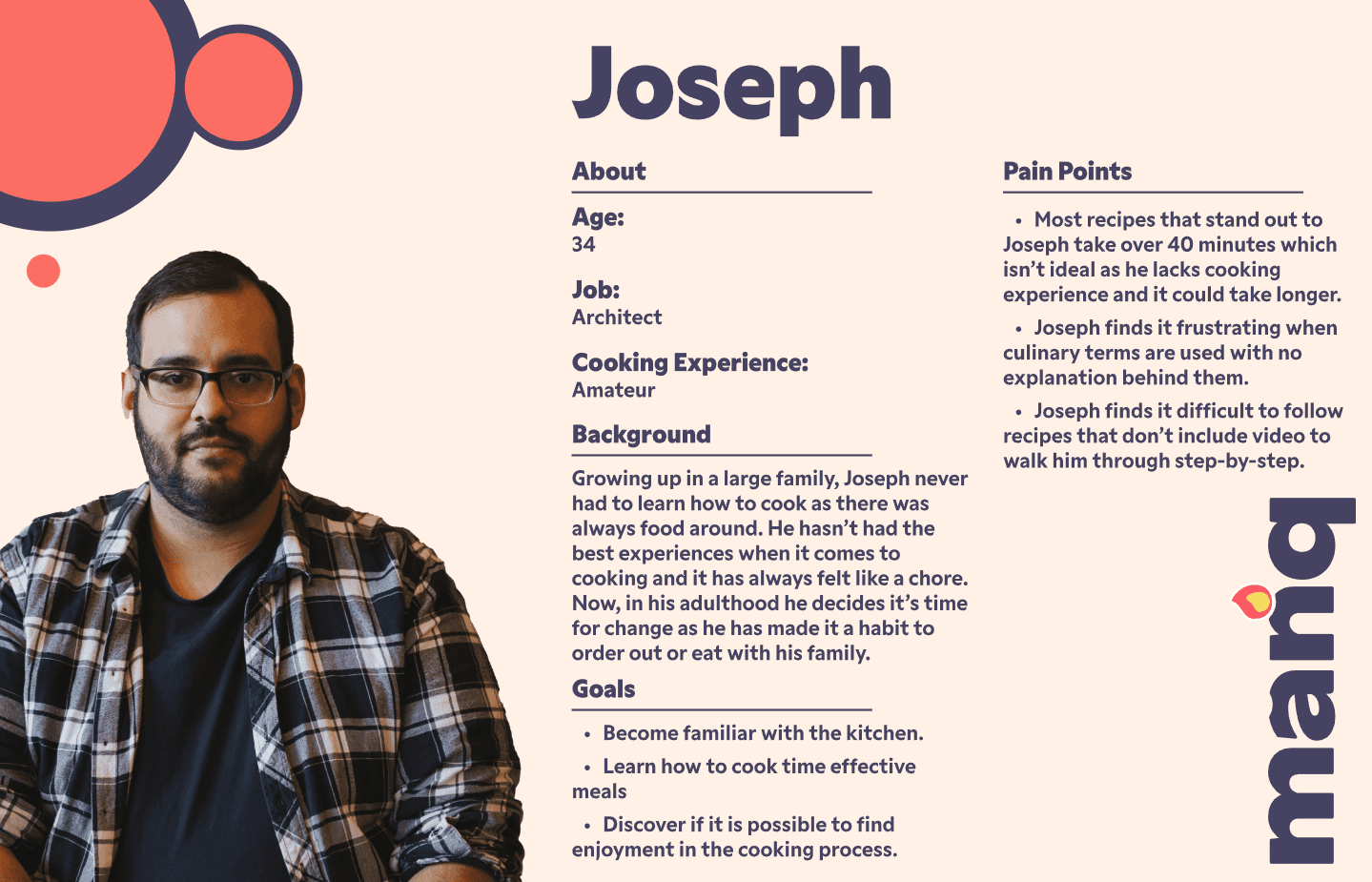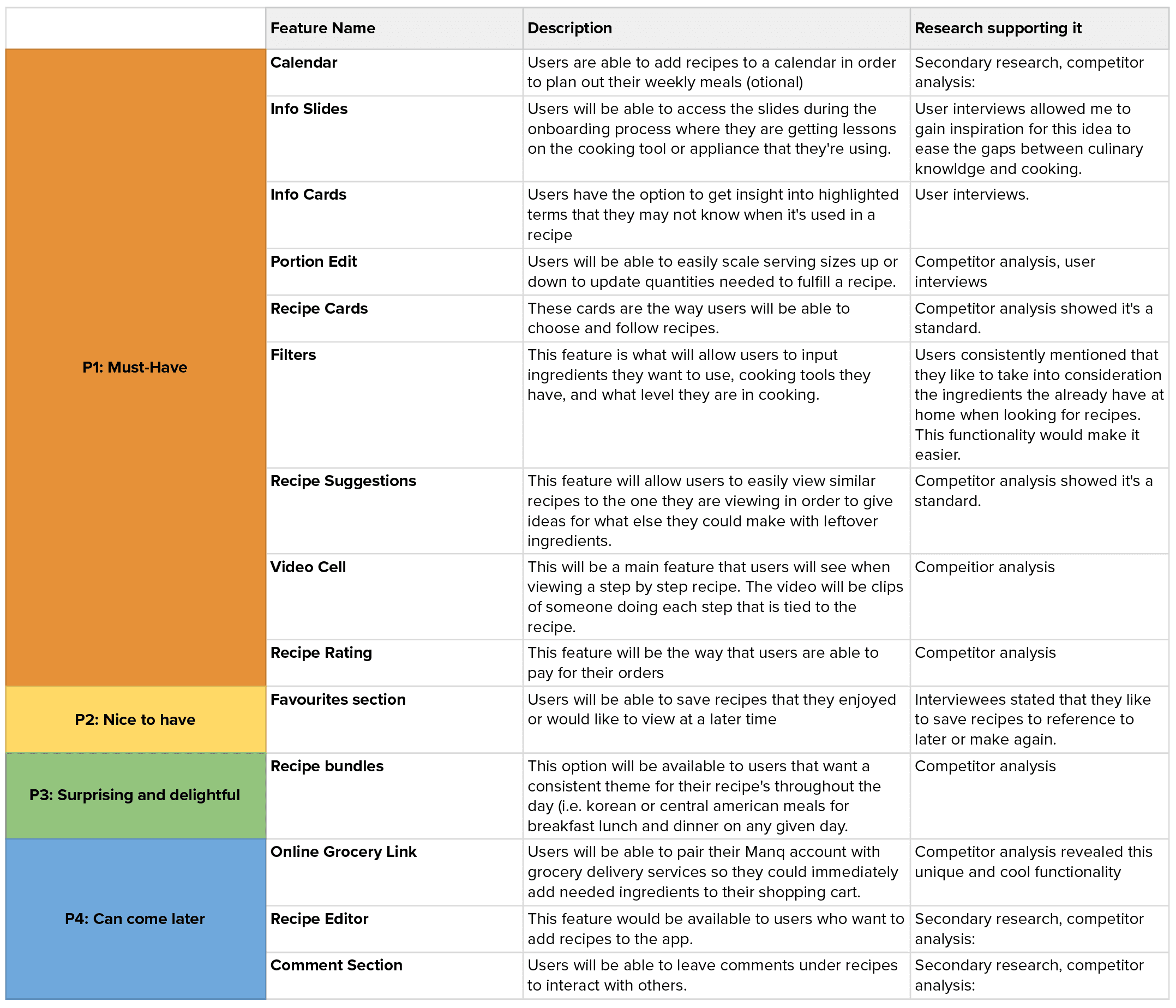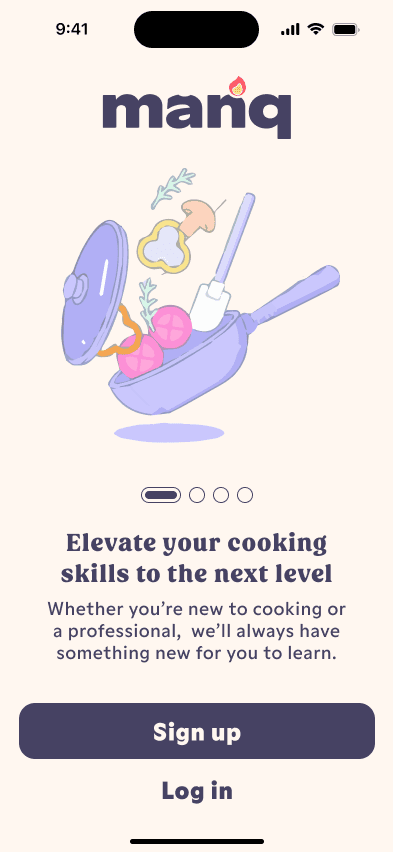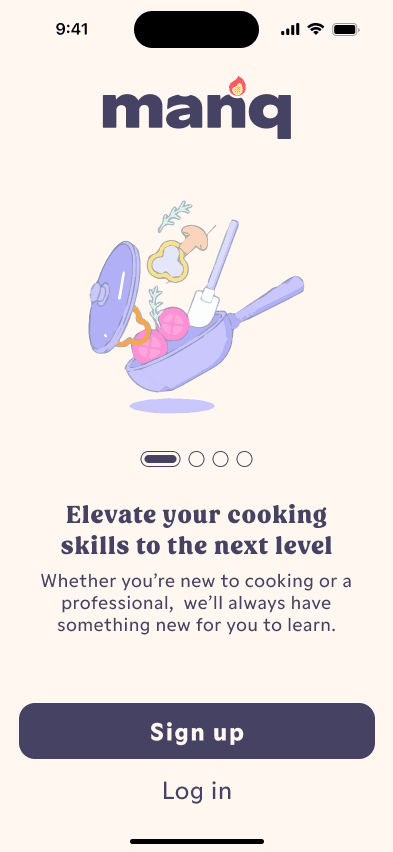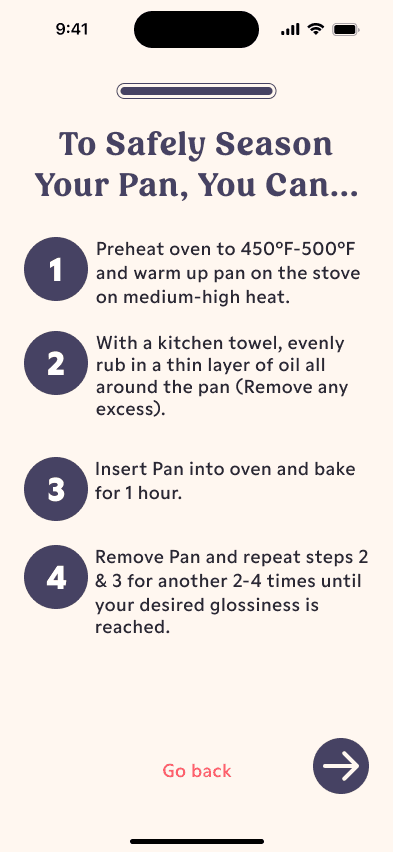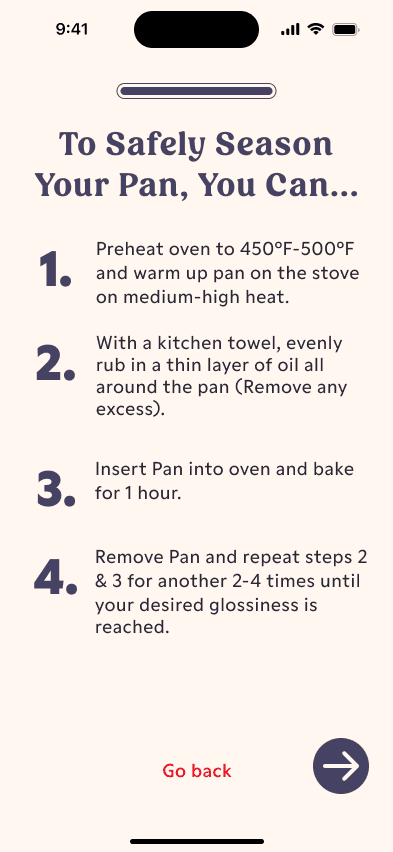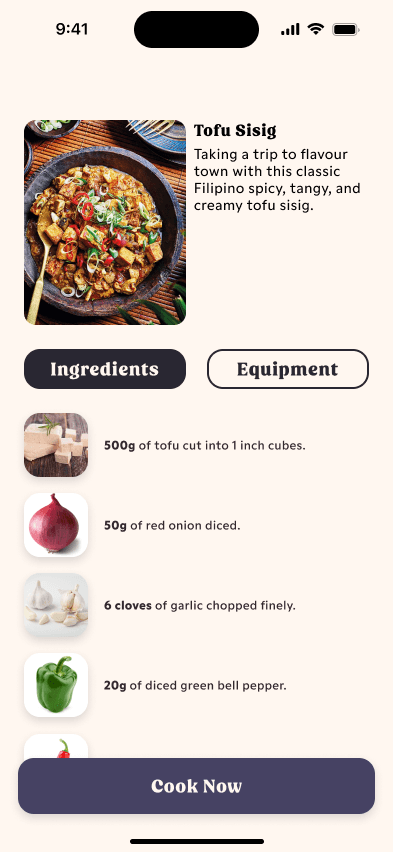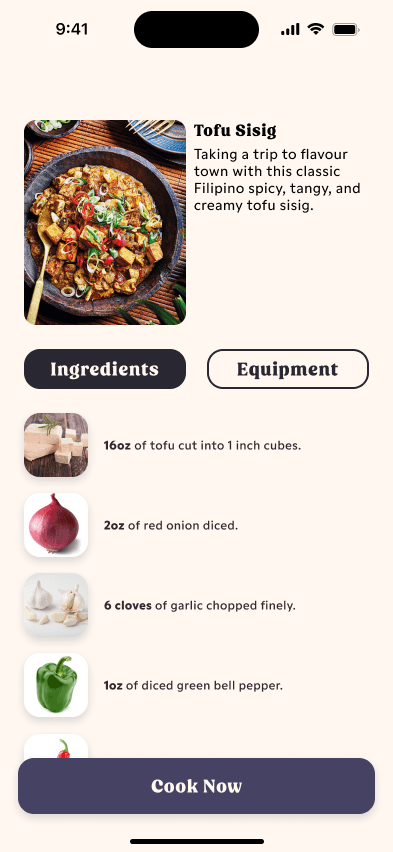Preview Manq
Bringing The Moving Sector Into The Modern Era
01
Project Briefing
Project Duration
3 Weeks
Project Goal
End-to-end Experience
Tools Used
Figma
Adobe Illustrator
Adobe Photoshop
Contributions
Branding
Interaction Design
Prototyping
Secondary Research
User Research
UI Design
Wireframing
What is "Manq"?
Manq is a mobile app designed to help users enhance their cooking skills without feeling overwhelmed. Acknowledging the vast history and complexity of cooking, Manq simplifies the learning process by educating users on modern culinary terms and techniques through a tailored approach. It provides recipes for practical application, breaking down cooking into manageable steps to make the journey enjoyable and approachable.
The Problem At Hand
Inspiration behind "Manq"
How did I combat the discovered problem?
By designing Manq as a versatile tool instead, I’ve incorporated various learning preferences to optimize the experience for each user. This approach streamlines the learning process, making it easier and more effective for users to retain the provided material.
02
Challenges To Overcome
Research inspiration
Given that Manq operates on a 'something for everyone' model, I’ve kept in mind the natural diversity in people’s learning needs and preferences. Each individual requires tailored approaches to learning, and Manq addresses this by accommodating a wide range of styles and preferences.
These are the questions I had to solve to account for this fact..
1.
What’s the best approach to teaching someone how to cook?
2.
How would I not overwhelm users with too much information?
3.
How do I ensure that users retain the provided information?
4.
What’s the best way to keep users engaged with the content?
02 - 01
Taking the first steps to build "Manq"
Research Summary
Competitive Analysis
Starting off, I decided to map out a competitive analysis to see what were the most commonly included functionalities and practices found in both recipe apps and learning apps (The 3 I referenced were Tasty, SortedFood's "Sidekick", and Duolingo).
Here were my takeaways…
Contextualize
Offer Modularity
Provide Simplicity
Practice Repetition
Give Positive Reinforcement
User Interviews
Now, I needed to see if what I found aligned with real people.
Selected interviewees were determined based on their comfort/experience with cooking and willingness to enhance cooking ability.
These interviews were conducted as one-on-one meetings.
5 Interviewees
Being able to do one-on-one sessions with interviewees allowed me to utilize my knowledge which kept the discussion going; extracting more useful details from each person.
Ages 21-29
Considering the majority of users for apps such as "Duolingo" and "Sidekick" are Gen Z and Millennials, this age range seems appropriate for the app's primary target.
Diverse Persectives
With 5 people, I was able to capture a wider range of perspectives to account for.
Here are some quotes that stood out.
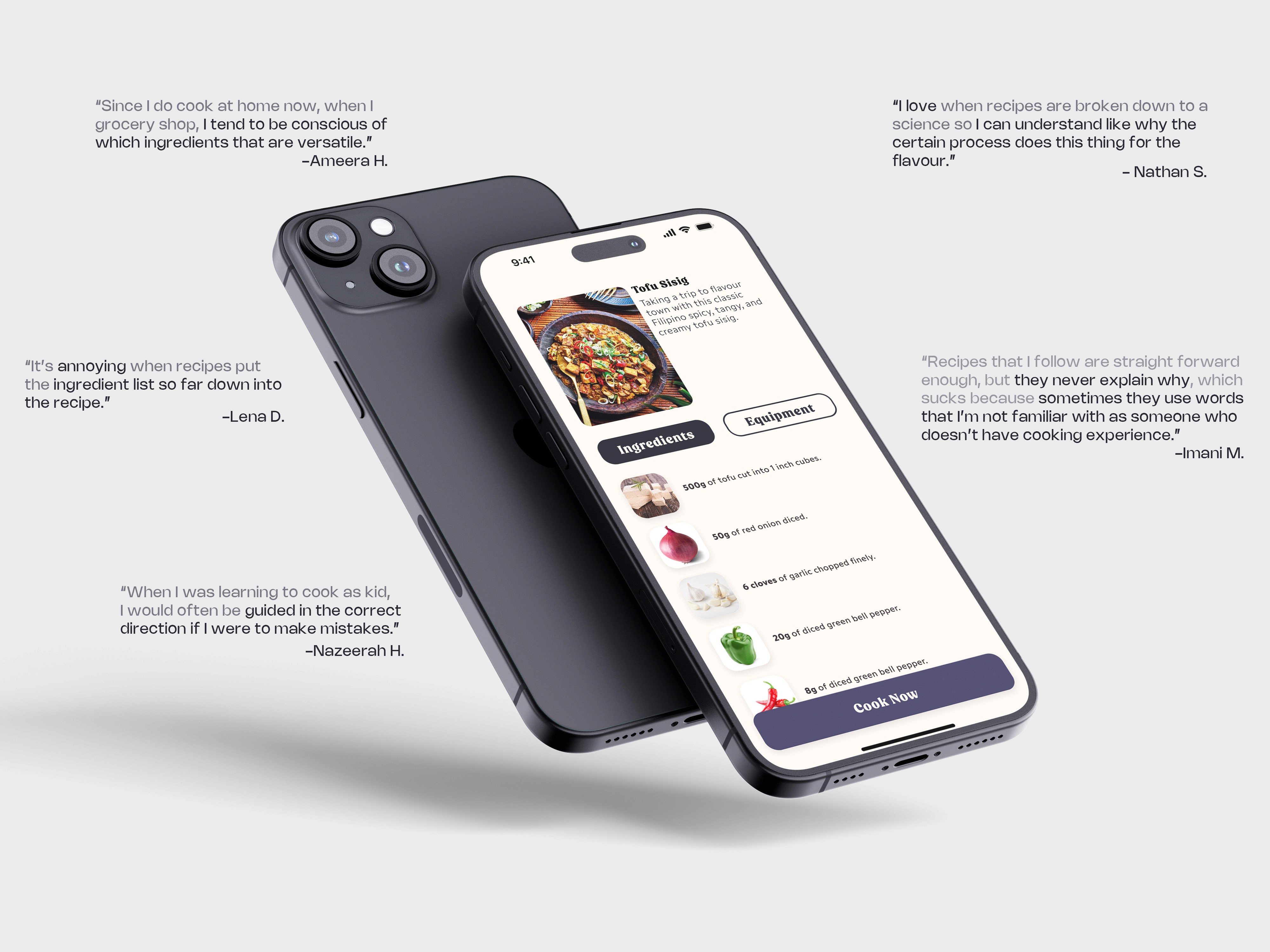
Affinity Mapping
Finding where the data overlaps.
Post-interviews, I compiled notable points into an affinity map to organize the data for analysis.
Key Insights
02 - 02
Developing functional features.
App Development
Defining Perspective
Using user data to build perspective.
Moving on with the insights I have gained from my user interviews, I restructured the problem I aim to solve and developed perspectives to guide me moving forward.
New Problem:
Many people today struggle with cooking, finding it time-consuming, complicated, or confusing. These challenges often lead to cooking being perceived as a chore, despite it being a necessity for nearly everyone.
Reason 1:
Recipes are written by experts who forget to cover nuances that novices would not know.
HMW 1:
How might we create an application that teaches people how to cook from the basics that also enables users to gain enjoyment and empowerment from the process?
Reason 2:
Family may not teach in depth about the proper ways to cook or operate in a kitchen.
HMW 2:
How might we improve the current way that cooking is taught online in order to effectively decrease the mental frustration people have when it’s time to make a meal?
Reason 3:
Genuine lack of interest.
HMW 3:
How might we allow for customized experience for people that want to learn how to cook in order to avoid overburdening them?
User Personas
Giving a face to our demographic.
Using a combination of user research and perspectives, I developed 2 personas that will keep me on track during development.
Business goals
Considering Scalablility.
From the very start of Manq's development, I focused on scalability. To thrive as a real-world app, it will need to generate revenue to sustain its beneficial features. While revenue generation isn't typically the primary responsibility of a product designer, understanding its importance enables me to make more informed decisions about features and prepare for specific use cases in the down the line.
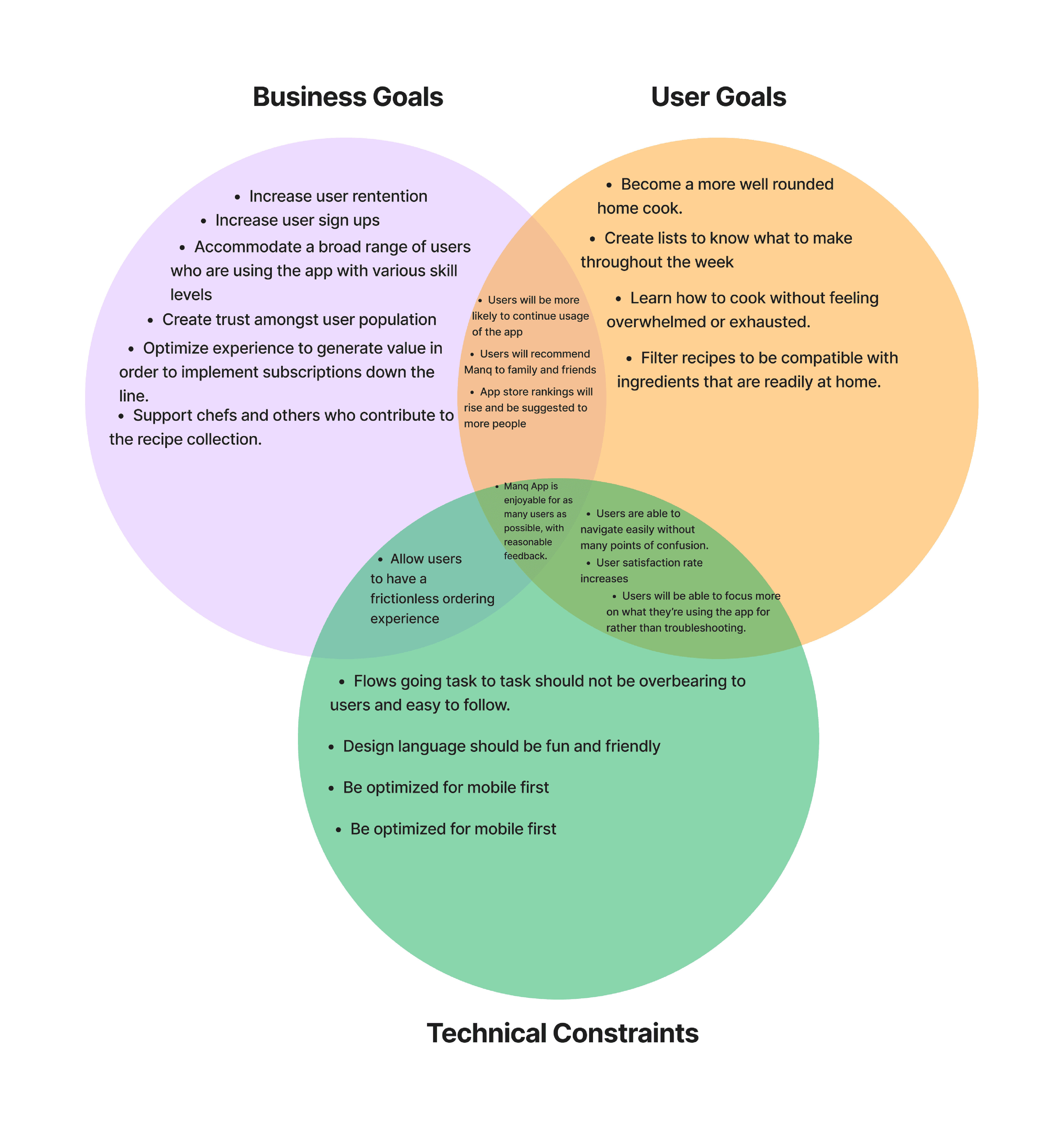
Feature Roadmap & Flows
Determining which features to include in my MVP.
Feature roadmap
Given that "Manq" addresses a widespread issue affecting many people, including myself, I wanted to ensure the project avoids pitfalls related to having an overly ambitious end-product. I aimed to balance ambition with a realistic timeline to ensure that the essential features could be completed effectively.
Feature roadmap
User flow
Creating the user flow was straightforward since the main pages and tasks were already set up. To find inspiration for adding a planner, I did a second round of competitor analysis, focusing on indirect competitors like Wanderlog.
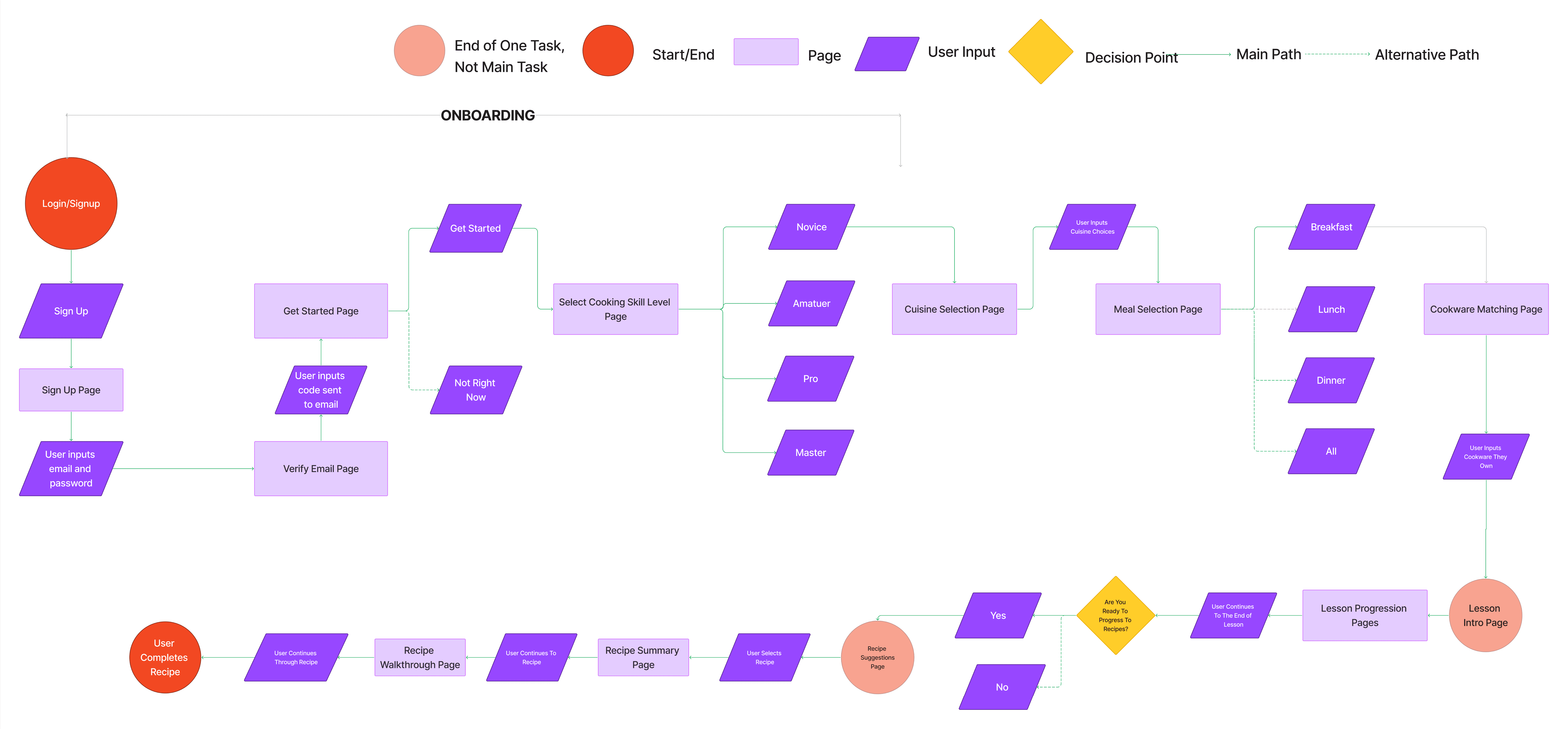
02 - 03
Fleshing out Manq.
App Development
Lo-Fi Wireframes
First round of wireframes.
To start, I focused on establishing a strong UX foundation for Manq. Given the complexity of the end-to-end project, I aimed to avoid major changes to the overall user flow down the line.
My low-fidelity screens were designed to provide users with a clear, general overview of what to expect after onboarding, ensuring a cohesive and well-structured experience from the outset.
Lo-Fi Feedback
Consider adding more screens that provide feedback.
There were a lack of points where users could easily escape or bail from task.
Suggested to condense list of what users want to learn (avoiding endless scroll).
Brand Identity
Defining Manq's identity
Manq aims to be a friendly and comprehensive app for aspiring home cooks, making cooking feel approachable and enjoyable. It seeks to demystify the kitchen experience, offering clarity and helpful tips while fostering a positive relationship with cooking. By embodying trust and warmth, Manq encourages users to view cooking as a delightful activity rather than a chore, promoting skill development in an engaging and supportive environment.
Approachable - Engaging - Trustworthy.
These are core values that Manq hold.
Logo exploration
As I refined Agile's logo design, I focused on incorporating the core values and aimed to achieve a sense of fluidity in the final result. This lead to a dynamic logotype which can invoke emotion without prior context.

Primary
#464263
#FFF7F0
Neutral
#FFFFFF
#B1ACB4
Secondary
#FC5965
Tertiary
#F4DB62
#699CFF
Colours
To maintain the friendly and accessible theme, I chose a palette that is vibrant, bold, and high in contrast.
Font Selection
To maintain the friendly and accessible theme, I chose a palette that is vibrant, bold, and high in contrast.
Peachi
Gamay
Hi-Fi Screens
Close to a final product.
After implementing suggestions, I was able to fully flesh out my vision for another round of user testing.
Hi-Fi iterations
Returning to users with polished wireframes was thrilling. The thoughtful development process made their interactions a pivotal moment for assessing the project's potential impact. Given my bias towards cooking, gathering feedback from those less enthusiastic about it was essential for making meaningful improvements to Manq. This diverse input will ultimately shape its success.
Here are some adjustments…
Iteration #1
Adjusted font weights to strengthen visual hierarchy and balance.
Iteration #2
Round circles around numerical steps clashed with continue button. Swapped for bold numbers.
Iteration #3
Hi-Fi Prototype
Manq in physical form.
All Finalized Screens
Compiling all screens here.
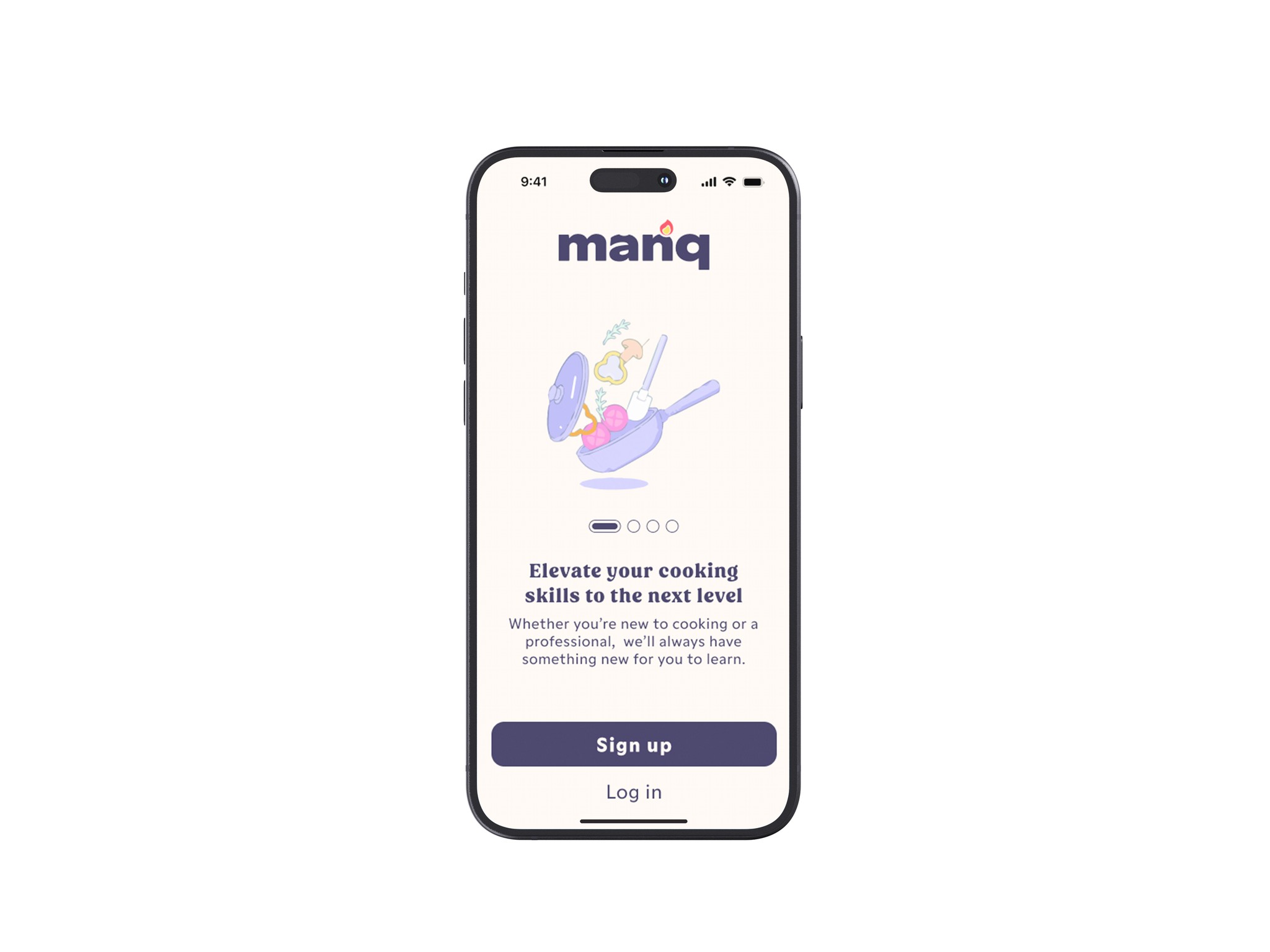

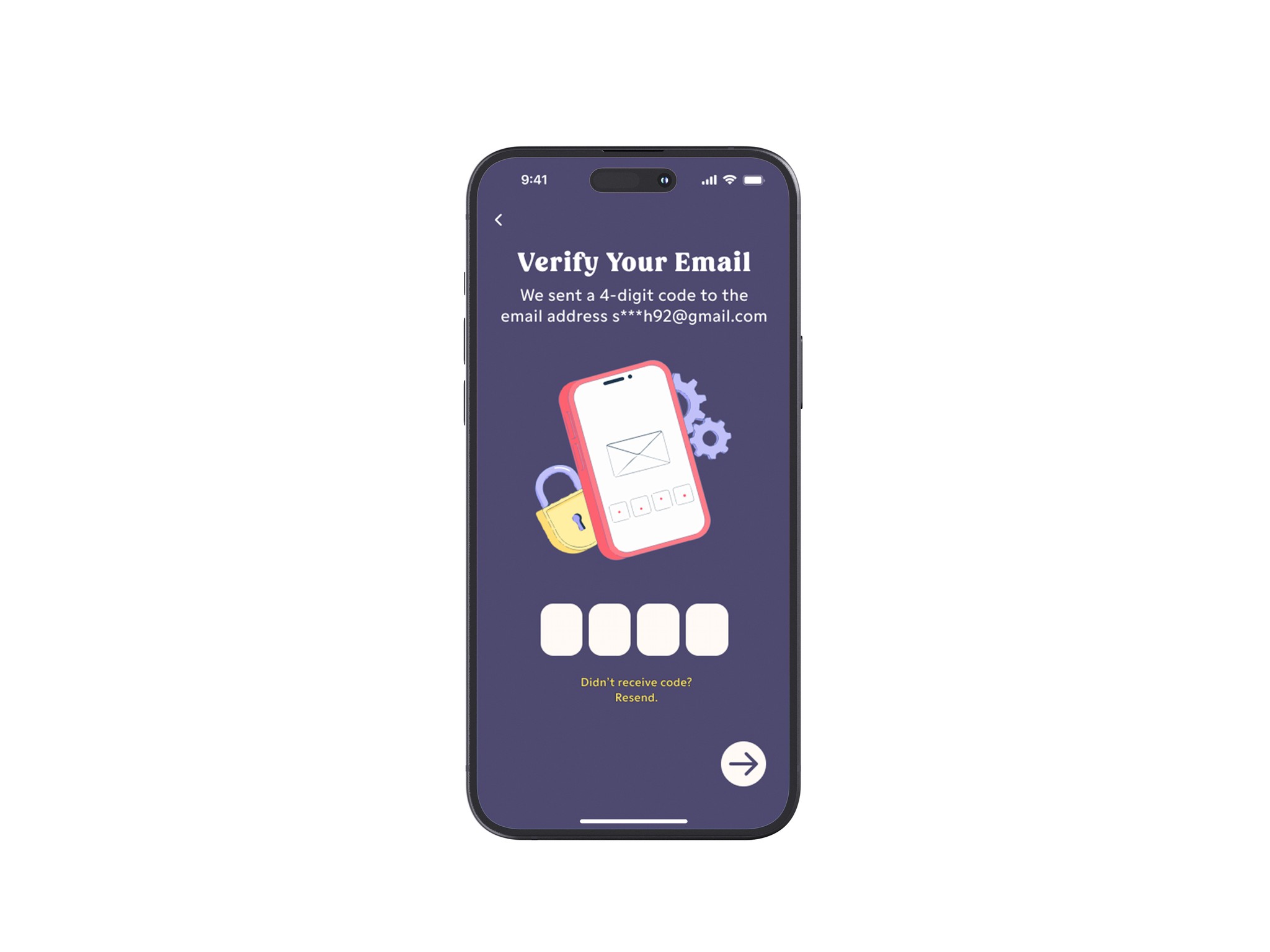

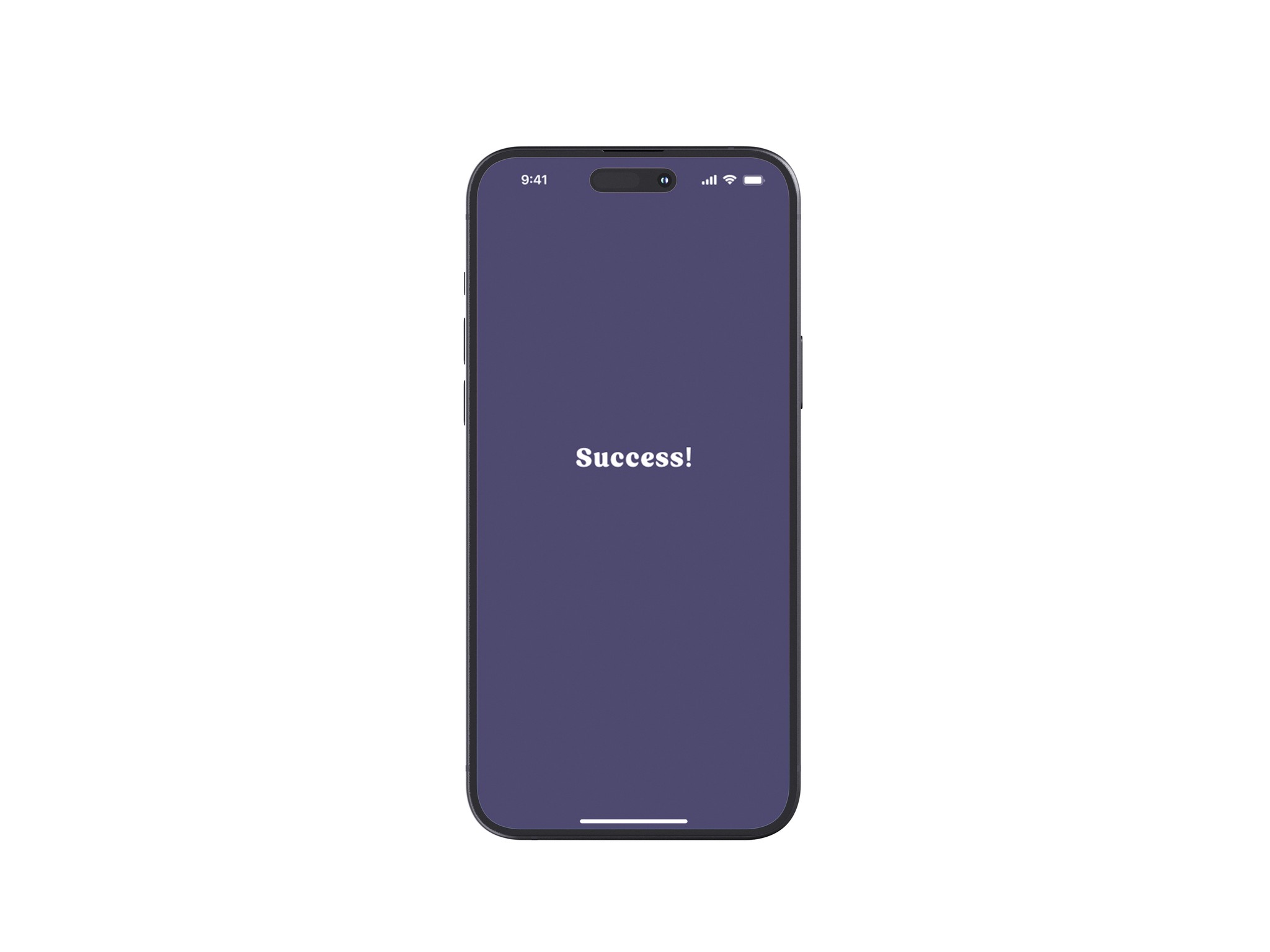

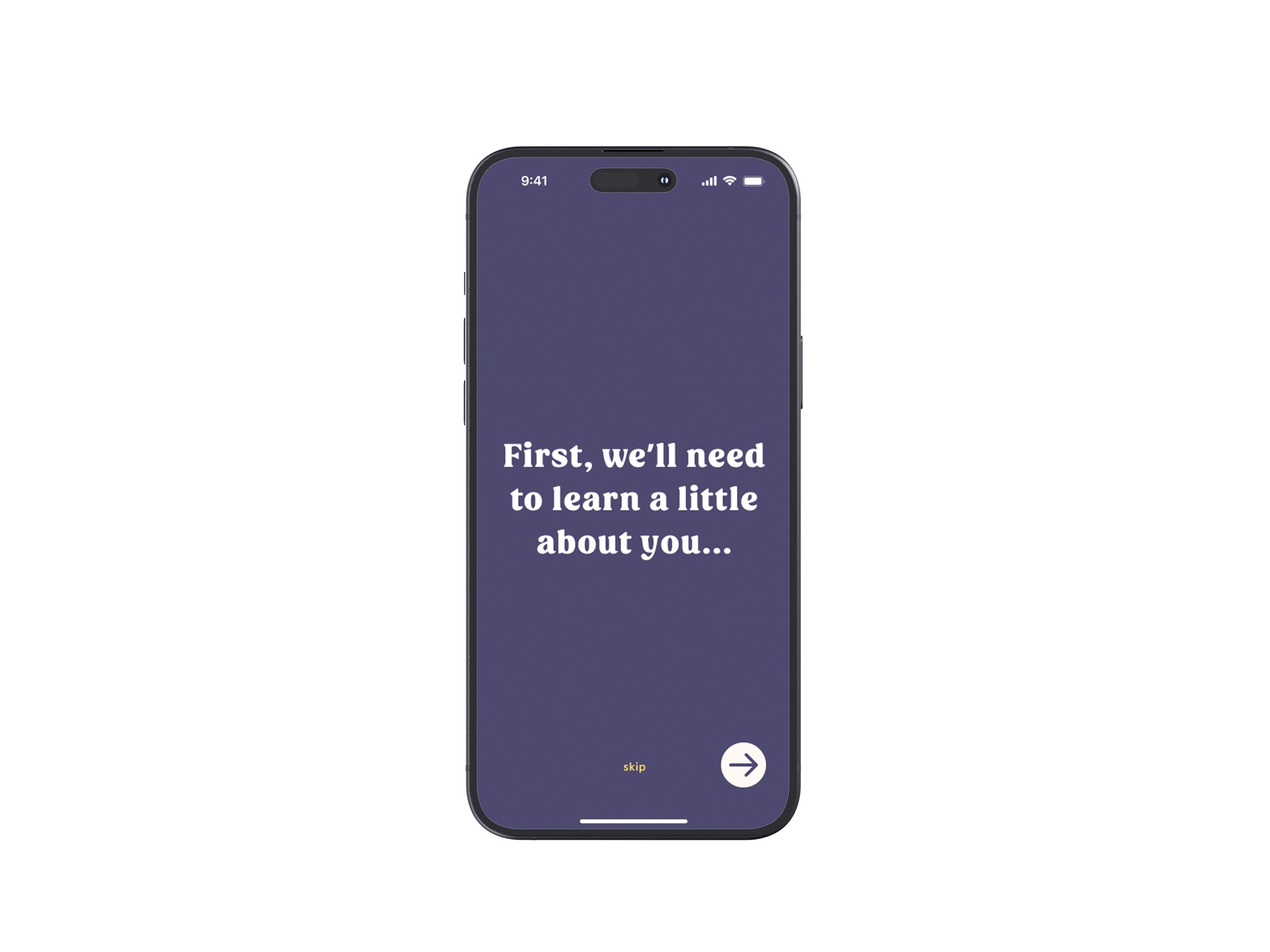

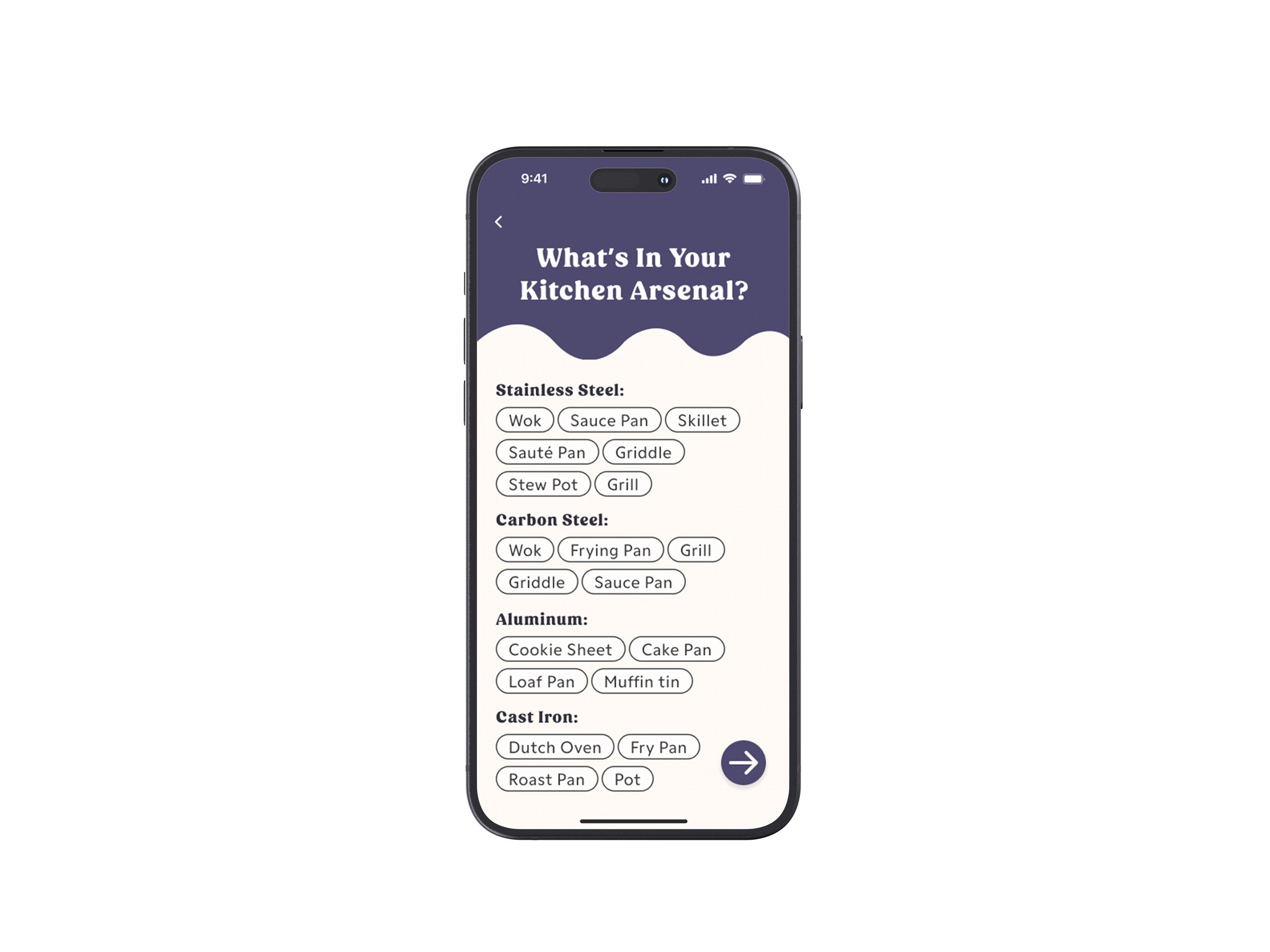
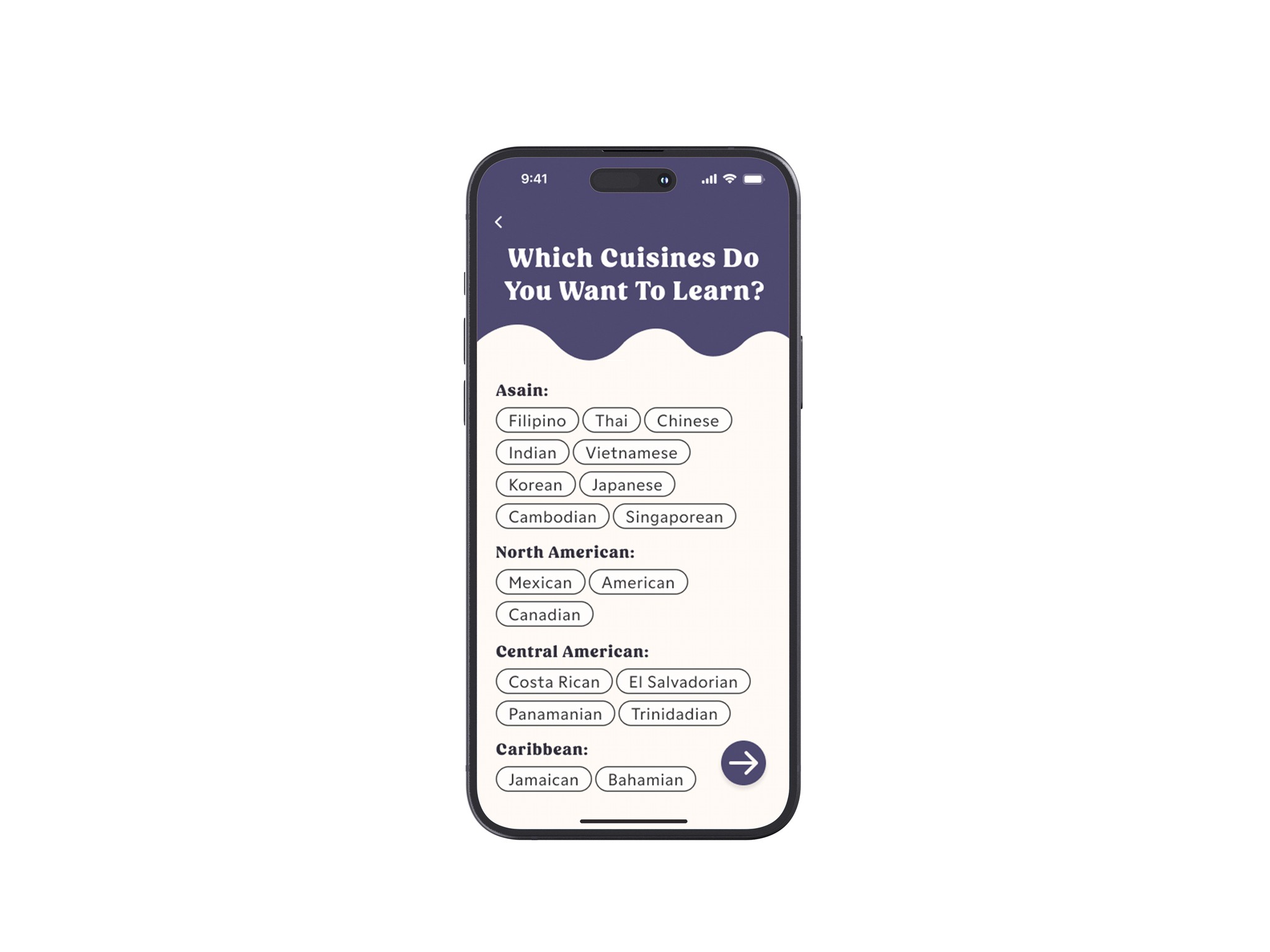


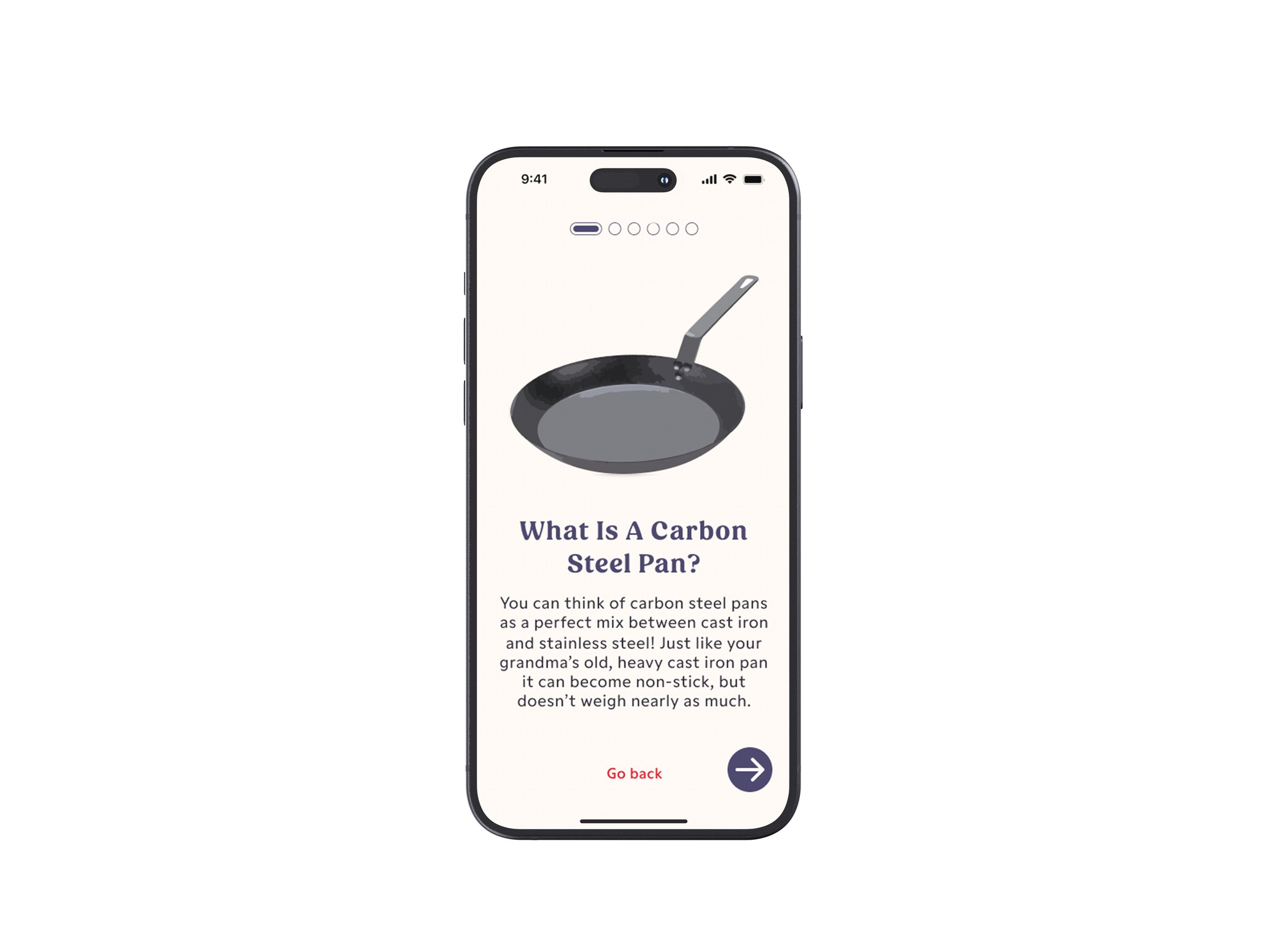
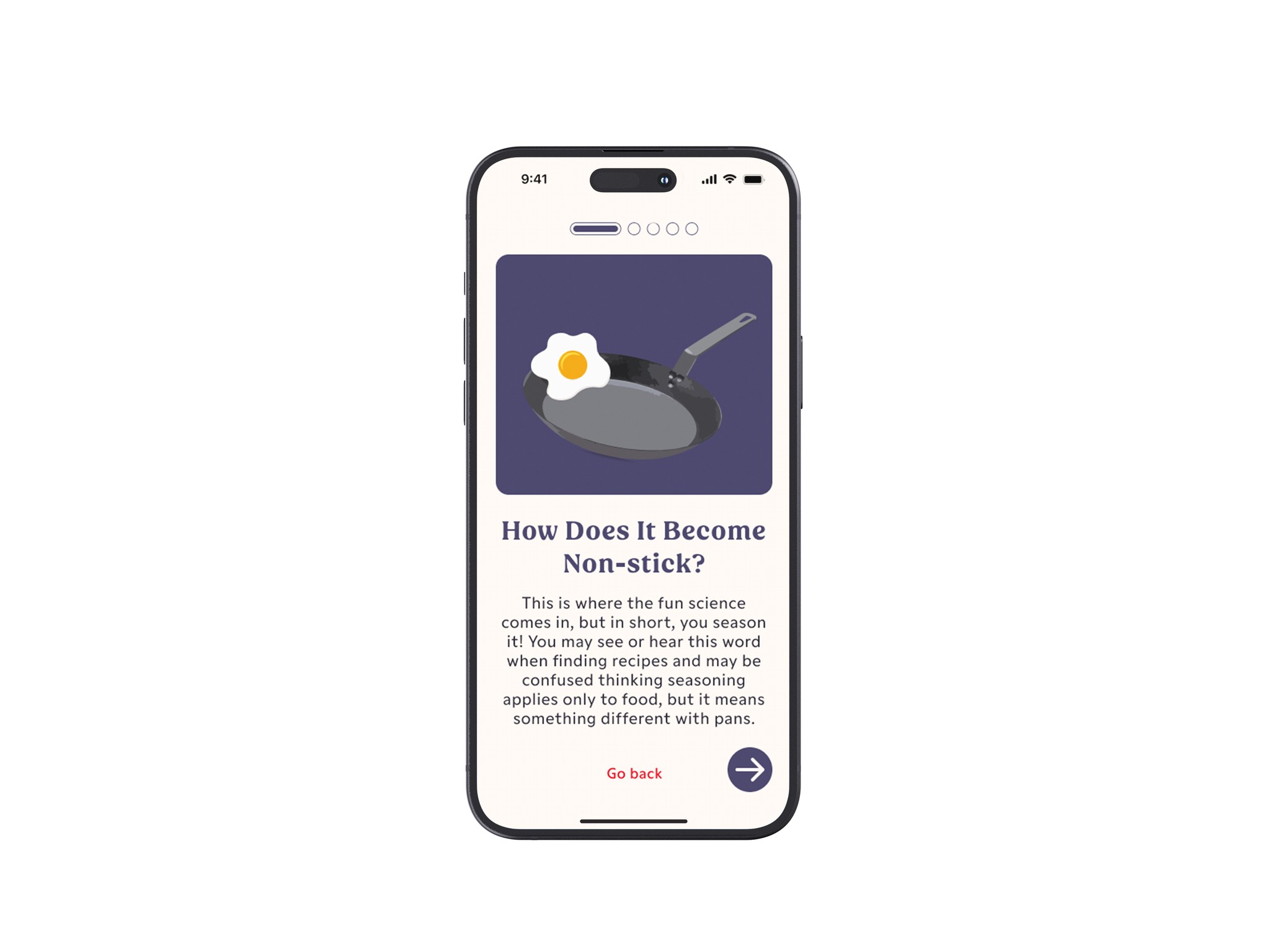



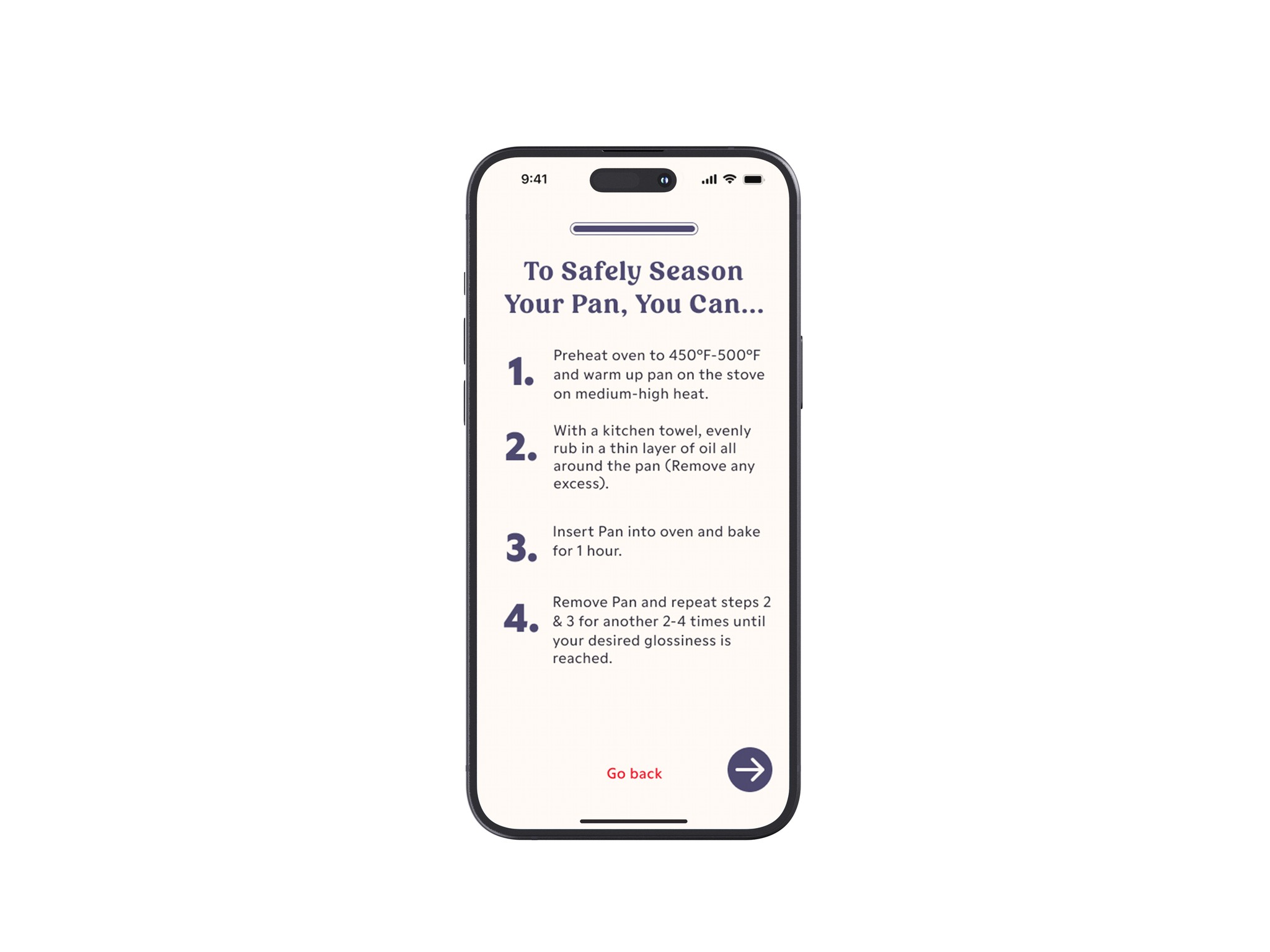
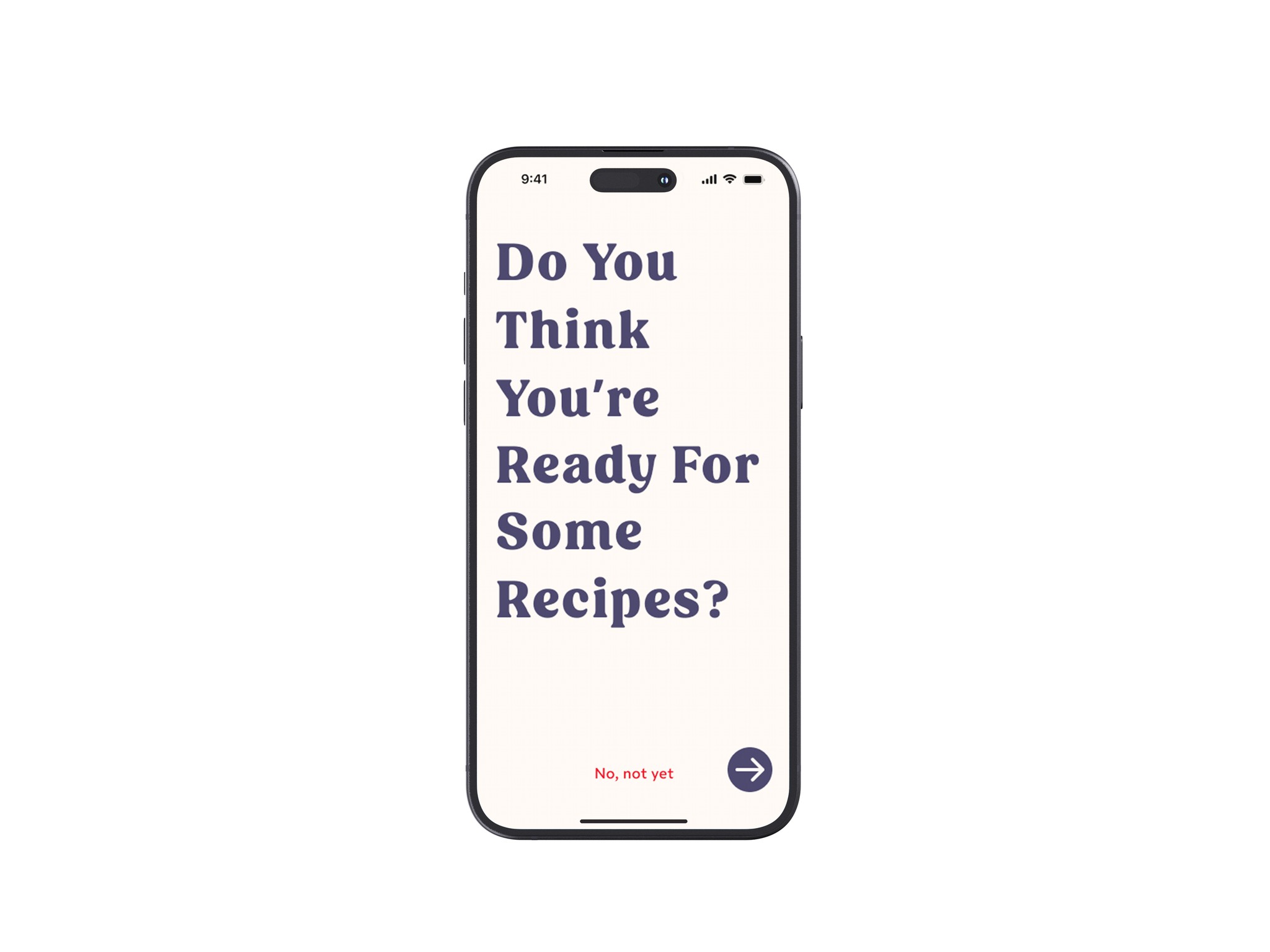
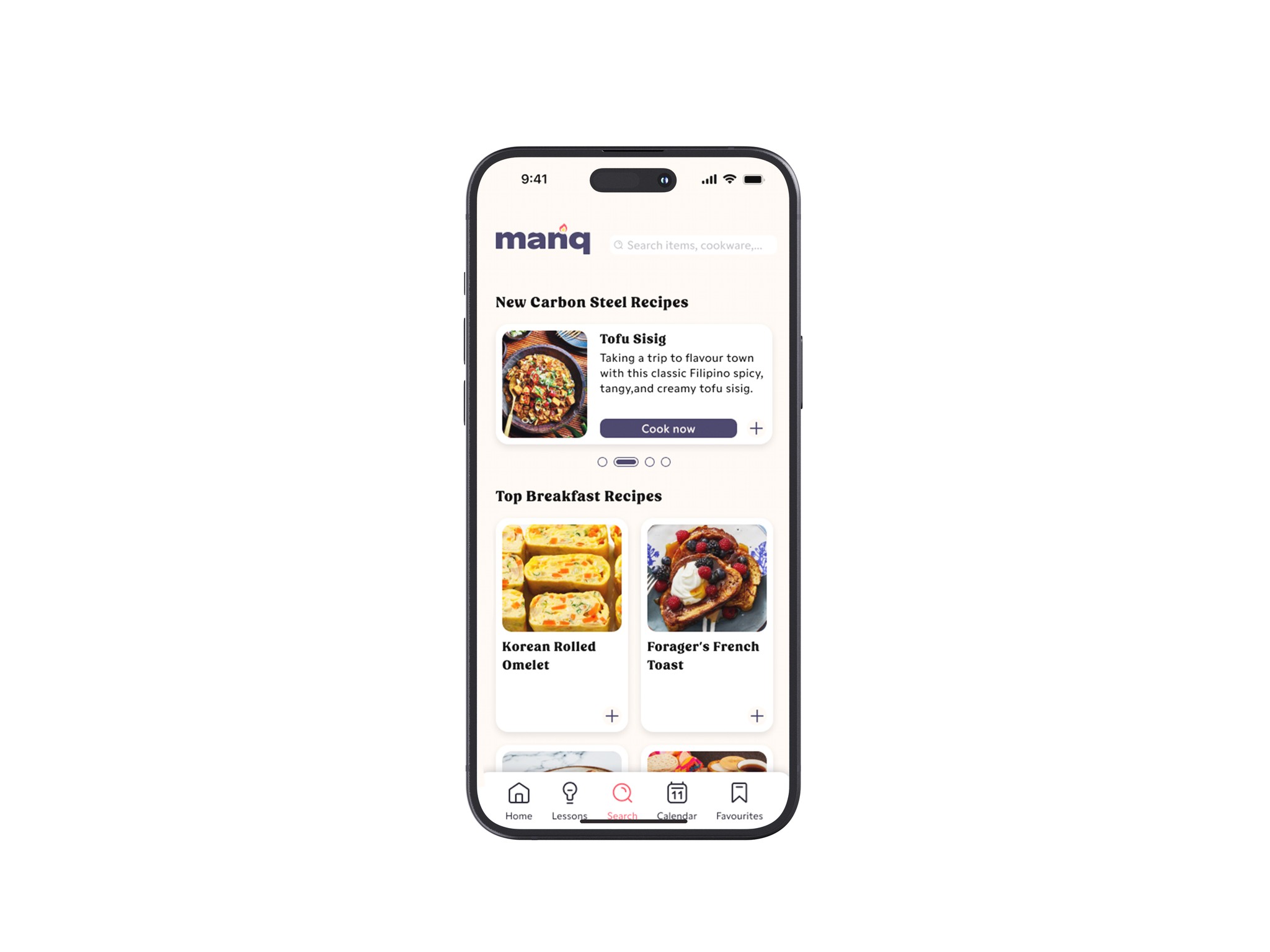

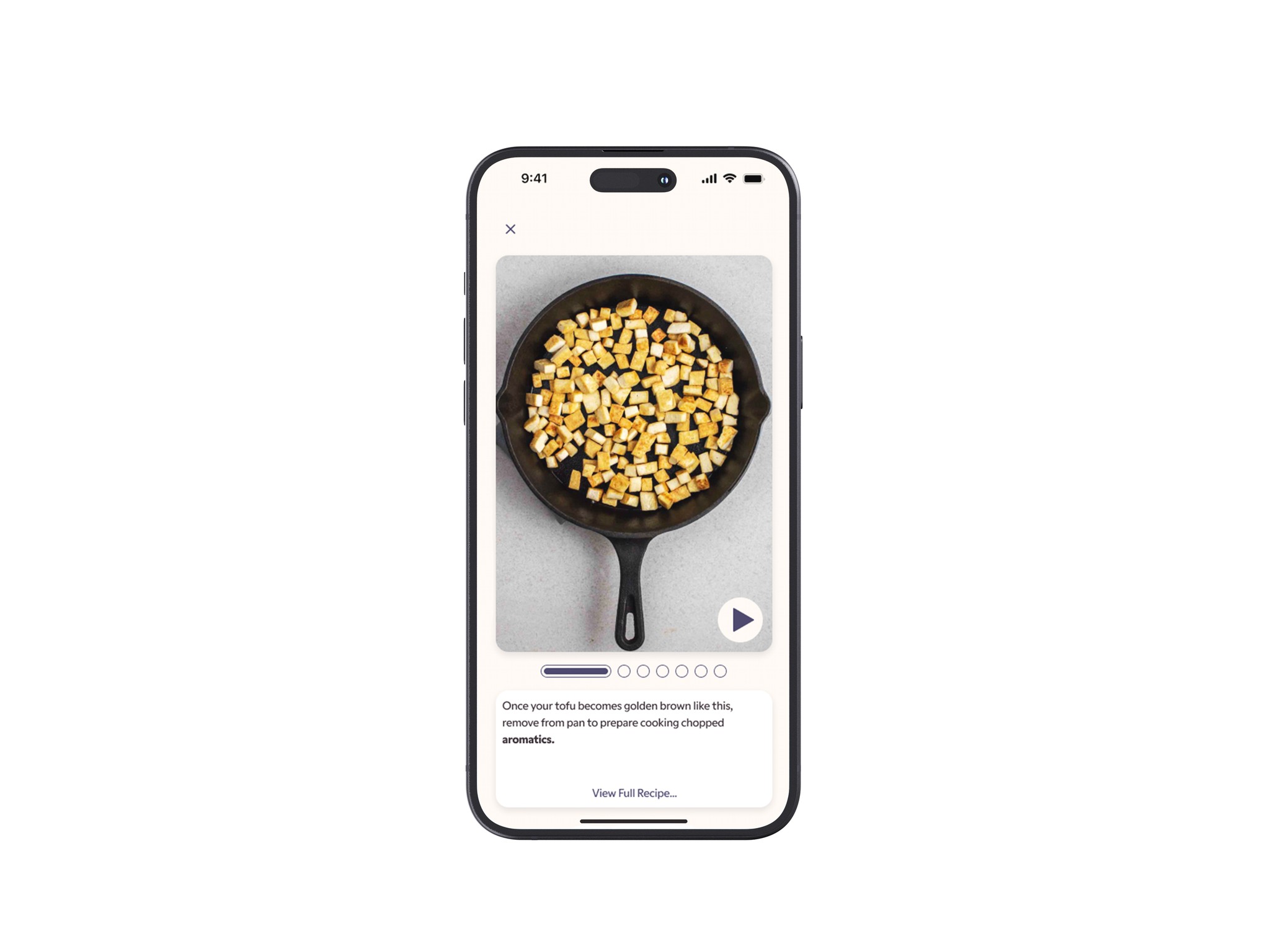
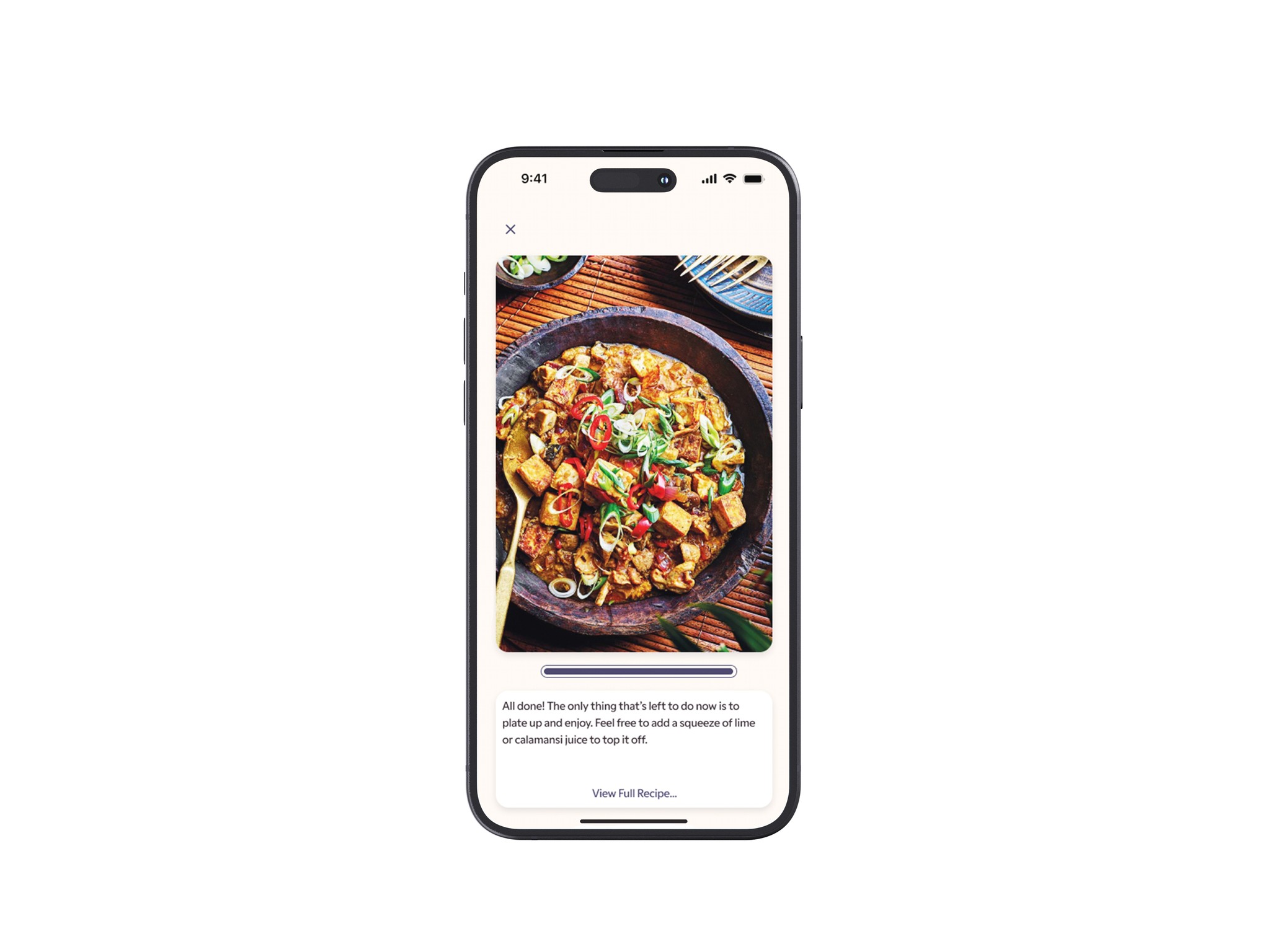
Takeaways
I truly loved working on Manq. Being tied to my passion it naturally infused with with soul, reflecting not just my vision but also the many contributions of all users involved. I see myself returning to further develop Manq, especially as there’s so much potential to expand, whether for a launch or to apply insights to future projects. Ultimately, Manq taught me the profound impact that user-focused design, combined with passion, can have on any product or service—it’s an invaluable experience.
